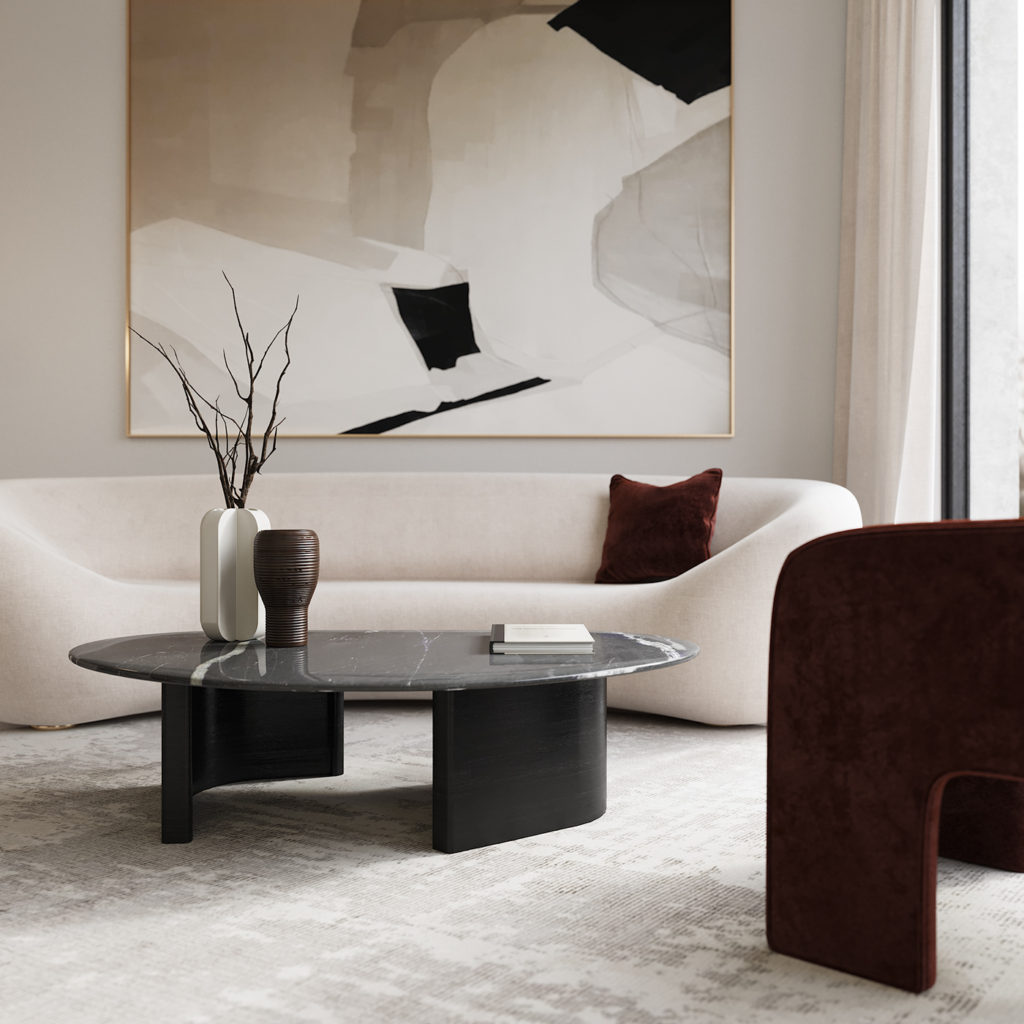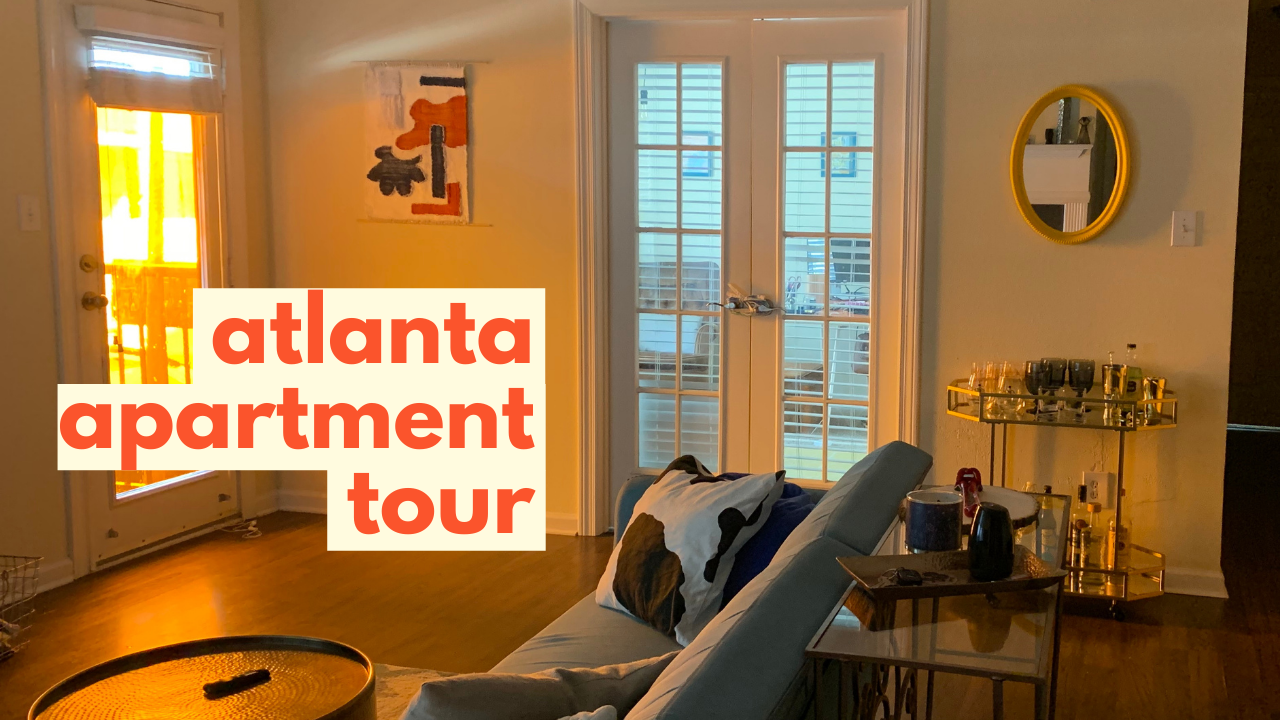Sustainable design is a huge trend that’s been rising for the past decade or so. And for good reason. The environment is at a tipping point, and any trend that can contribute to a better, healthier future for the earth is a great thing. But it can seem not quite as accessible to the everyday person. Especially when you rent instead of own.
When I think of sustainability, I think solar panels, getting expensive organic fabric, and fancy irrigation systems. But realistically, there are so many ways that you can make even your apartment or rental home more eco-friendly on a budget.
furnishings
Going eco-friendly with your furniture is one of the easiest ways to increase the sustainability of your home without making structural changes that aren’t possible in a rental.
thrift
Now you know I have to start out by talking about thrifting. I love a good thrift for so many reasons, and sustainability is one of them. This is an obvious way to dip your toe into sustainable design, but it has to be said.
Instead of shopping at a store with mass-produced furniture, like Ikea, Target, Walmart, etc., if you opt for a thrifted item, you’re automatically reducing your carbon footprint. It’s more than just the materials of the furniture item itself that are conserved, but also the energy and pollution that power the plant they are made in.
repurpose
Repurposing something in your house is almost like thrifting from yourself. It’s free, good for reducing waste, and sometimes can give you an opportunity to flex your creative muscles.
This could be as simple as moving a piece of furniture to another room. For example, I chose to move my old dining table into my office as a project table once I decided I didn’t want the bright orange in my dining room anymore.
It could also be DIYing something that doesn’t work for you anymore to make it work. Another example from my house: I had a chrome clothing rack that didn’t fit my aesthetic, so I spray painted it matte black. This could also look like painting a stool a cool pattern and using it as a side table, putting contact paper on a surface that you don’t fuck with anymore, you get the point. Basically, just making it work with what ya got.
This also saves a lot of money.
go minimalist
I’ve railed on lifeless modernity/minimalism before on this blog, but minimalism, if done tastefully, can actually be great for the environment.


I’m naturally a maximalist myself, but I love to thrift, so I’d like to think it balances out in terms of sustainability. If you like buying new, high quality pieces, minimalist might be the route for you to keep it eco-friendly.
Minimalism is all about sticking to the basics of what you need and what makes the most impact, which leads to less waste.
pick your materials intentionally


Even though wood is a natural material, excessive use of wood in furnishings can contribute to increased deforestation, which is one of the major causes of climate change.
So when buying furniture new, it’s good to sometimes opt for more sustainable materials, like bamboo, metal, stone and glass.
But speaking of materials, that leads me to my next point…
reducing toxins
Pollution can happen after the production of a product, too. There are certain synthetic materials that can radiate chemicals once you put them in your home. Which is undoubtedly bad for both your health and the environment. Toxin reduction is another super-accessible way to achieve sustainable design.
get natural fibers when you can
That dope rug from Amazon may be perfect, but if it’s made out of synthetic materials, the odds are good that it could be releasing toxins to some extent in your home. This applies to curtains and any other textiles you have in your home as well. That’s why it’s always a good idea to go for natural fibers when possible. Since these occur in nature, you don’t have to worry about any mystery chemicals.


Some examples of natural fibers are jute, silk, cotton, wool, and hemp. Animal fur/hide is a natural fiber as well, but in addition to ethical considerations, the animal industry itself contributes a ton to pollution, so it’s best to stay away from that.
what’s in your paint?
Remember the toxins I mentioned? Those toxins are called volatile organic compounds, or VOCs for short. One of the biggest releasors of these VOCs in most peoples’ homes is actually the paint on your wall.
This is a terrible thing to have giving off toxins constantly, because it’s literally all around you.
Luckily, it’s 2020 and we’ve got solutions for that. There are plenty of paints nowadays that are low or even zero-VOC. They might cost slightly more than other paints, but the price difference isn’t too insane, especially if you’re keeping in mind that this could prevent a ton of short and long-term effects of chemicals in the other stuff.
cancel out the bad shit with plants


There is probably some amount of these VOCs that you can’t avoid. Maybe you can’t/don’t want to repaint your whole apartment. In that case, plants are actually one of the best ways to combat these bad chemicals. They take in carbon dioxide and release oxygen in its place as well as absorb harmful chemicals. You could get special filters for your ventilation system, but that can be expensive, they don’t work as well as some plants naturally do according to a handful of studies, and they don’t add anything to your design.
Plants, on the other hand, can add so much character to your place. It can be as simple as a couple of plants on your window, a big tree in your living room, or a whole living wall. Any amount of natural vegetation in your house can contribute to cleaner and healthier air. Check out this website to see what the best plants air to boost your air quality.
energy efficiency
Another way to make sure that you can achieve sustainable design in your house is to make sure that you’re using energy efficiently. When you waste energy, it boosts the use of these huge power plants that are pumping CO2 into the air. So energy conservation is a huge part of sustainable design.
lighting
Another super easy fix. Making sure that all of your lighting is from LED bulbs automatically makes your home more eco-friendly. Not only do LED bulbs last so much longer than more traditional bulbs, they are also less environmentally harmful to produce.
As a bonus, you can have so much more fun with LED bulbs. These are the colorful strips you see in literally every teenager’s bedroom now and the color-changing, bluetooth app-controlled bulbs.


Though LED lights tend to be slightly more expensive, the difference isn’t too drastic. And with the extended lifespan, they more than pay for themselves.
Another option to saving energy (and money) with lighting is to optimize the natural light that’s available. This can be a huge struggle, but I gave some tips on the blog a few weeks ago.
temperature control
Heating and air conditioning are massive energy sucks. That’s why it can sometimes be scary to look at your gas/electric bills in the prime of the summer and the winter. But equipping your home with draft stoppers at the bottom of your doors — especially older ones — and getting good, thick curtains to stop the heat or cold from creeping in your house can save your tons on energy bills. And save the environment just a little bit as well.


see? sustainable design isn’t for the rich and boujee?
There are plenty of ways to make sure that even as broke ass renters, our design decisions are contributing to a better, less polluted world.
keep it sustainable, and
keep it homey, homies
About me
Hey my name’s Hannah Michelle Lambert, the voice behind homey homies. I’m an LA-based designer, writer, and content strategist. I’m passionate about the intersection of productivity and creativity. I love talking about creative habits, technology, processes, and everything in between that helps me blend the Type A and Type B parts of my brain.









Leave a Comment